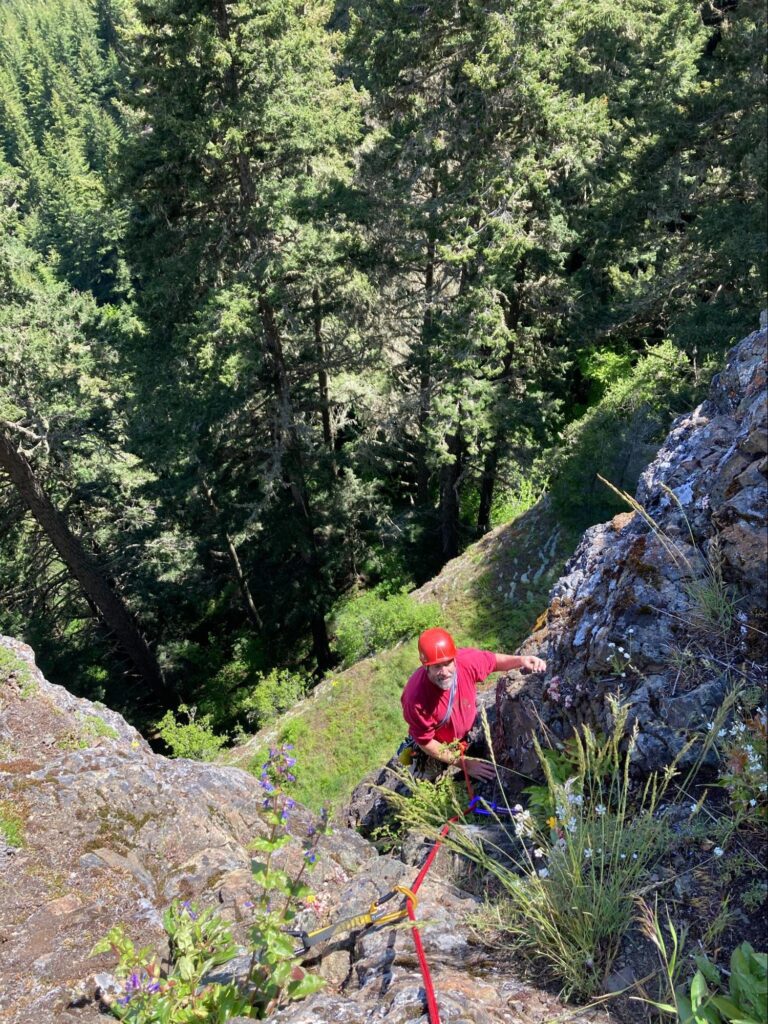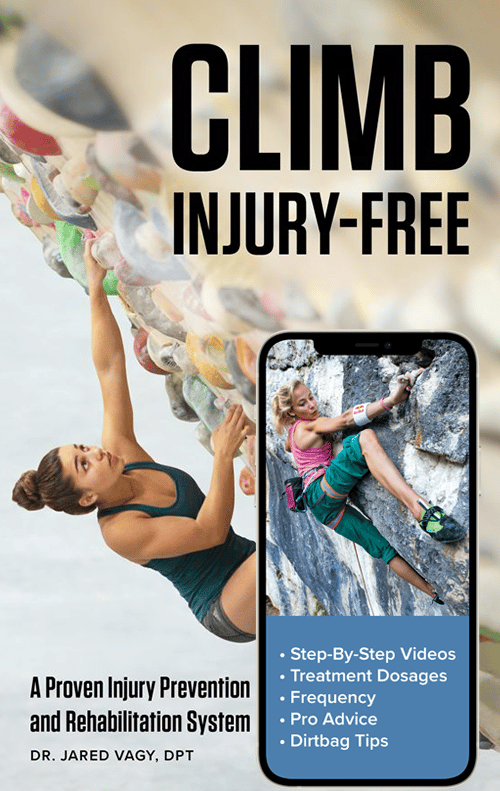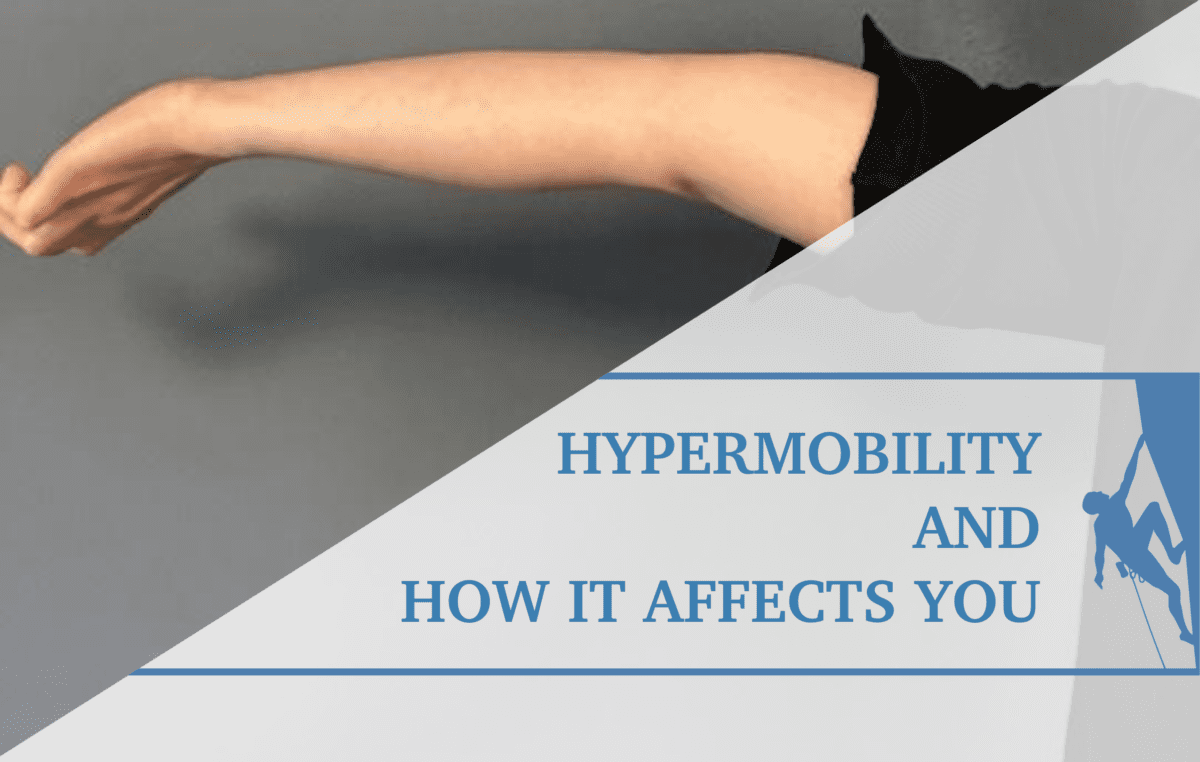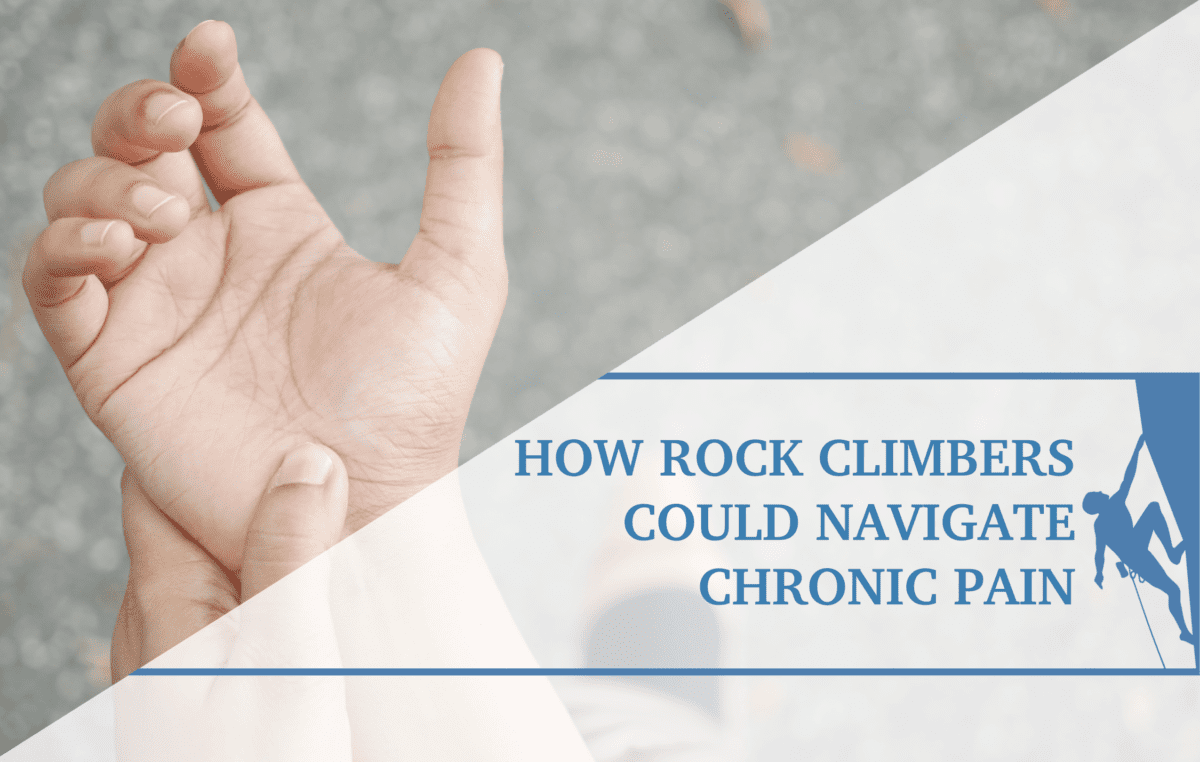Self-Talk and Injury Rehab – Guidance for Physical Therapists Treating Climbers
Physical therapists who work with climbers have likely heard or experienced some version of this story: Your patient, a climber, has spent several weeks rehabbing a shoulder injury with your guidance. The progression through the plan of care has been emotional. Some days are positive and some days your patient feels like they will never get back to climbing at their previous level.

You notice your patient has been in a low mental state. You feel you have a good handle on the physical part of therapy, but what about the mental? How can physical therapists recognize negative or unconstructive self-talk in patients who are climbers and assist in reframing their internal dialogue to achieve success with plan of care and performance, while remaining within their scope of practice?
Research has supported the effects of positive self-talk and the detrimental effects of negative self-talk regarding overall health and patient’s self efficacy around pain and the recovery process.1 Could addressing your patient’s negative inner critic be the missing piece of their HEP?
What is negative self-talk, and why does it matter?
Addressing internal dialogue with recovery from injury should become a larger part of the conversation around performance. This may differ if climbing is more of a hobby versus lifestyle. If your patient describes themself as a climber, time away from climbing may bring up spiraling thoughts or emotions due to the perceived threat on their identity.
Self-talk refers to the internal dialogue individuals develop, commonly known as their “inner voice,” which aids in processing and navigating both their internal thoughts and external experiences.1,2 This dialogue can range from encouraging and affirming to harsh and judgmental. Negative self-talk typically consists of broad generalizations, such as “I’m a failure, incapable of getting anything right” or “I’ll never improve.” Research has demonstrated that individuals who employ more positive self-talk tend to heal faster from injuries compared to those who engage in negative self-talk. Moreover, positive self-talk has been shown to enhance performance during rehabilitation sessions.1

Growth vs fixed mindset: How does your patient see themselves?
Picking up on your patient’s style of self-talk may take multiple sessions to determine, but much can be found in the initial interview/evaluation in combination with outcome measures such as the QDASH, SPADI (for upper limb injuries), or other objective measurement tools. These can give the practitioner a way to objectively measure the patient’s relationship with their injury and beliefs around recovery.3 Other tools such as the Brief Resilience Scale can be used to gauge a climber’s ability to “bounce back” after stressful events such as injury.4
- Growth mindset: This is difficult for me now, but I can keep working to become better
- Fixed mindset: This hurts too much and I will never recover.

Identity matters
Social bonds through activity play a significant role in identity. Physical therapists often see patients who are likely in a state of identity crisis. Patients who are climbers may rely on climbing to fulfill not just physical needs, but social, or even economical if they are employed as guides or similar positions within the industry. So, when their ability to participate in climbing (identity) is threatened due to injury, it can cause the climber to spiral and possibly dwell in more negative self-talk.

Evidence of safety/therapeutic alliance
In the age of WebMD and misleading social media health and wellness accounts, opinions on treatment options can be overwhelming. Alongside these resources, the field of medicine is shifting from an active-passive model, in which the patient passively receives and agrees to care, to a more collaborative mutual-participation model which gives the patient more weight in the decision making process.5
Climbers who are injured may not be used to feeling vulnerable, so trust must be established by the physical therapist. Unsurprisingly, research has supported that patients who expect physical therapy to help are likely to report more thorough recovery than patients who expected no benefit.3 This could position physical therapists who climb as potentially more impactful while treating climbers compared to physical therapists who are not climbers. This is based on the tendency of humans to trust those who appear more similar to us and those who have resemblance to people we already know.6 This does not mean that physical therapists who are not climbers will not provide exceptional care, it just may be a little easier for a climber to trust a provider who also climbs.

How can physical therapists work with patients to combat negative self-talk?
Physical therapists can use various strategies to redirect negative self-talk into positive. One technique borrows heavily from Cognitive Behavioral Therapy (CBT). These strategies include cognitive restructuring through awareness of internal dialogue (negative or positive), adopting more positive patterns of thinking, encouraging repetition of positive thoughts, and evaluating if the patient believes these changes are impacting their episode of care.7 For example, if a patient tells you “Everything just hurts so bad and I don’t think I’m ever going to climb again” how should you respond?
“Oh yeah, that shoulder looks like garbage. I would expect you to be out for at least a year!”
OR
“Ooof, I see what you mean by being frustrated, this is a significant injury that is probably going to take some time to heal. However, I see you and your body as resilient and I can help you work through this… What if we worked on challenging the fear of never climbing again by focusing on what you can do now and go from there?”
However, a physical therapist should be careful to observe the patient’s demeanor and response to these tactics. Physical therapists treating climbers should strive to establish trust, demonstrate their knowledge of the patient’s condition, offer emotional support, and, to the best of their ability, be consistently present throughout the episode of care.5 Watching a patient achieve return to sport can be a strenuous but rewarding process, and expanding your toolbox to include addressing your patient’s internal dialogue can result in more fulfilling and successful bouts of rehab.

Actionable tips for physical therapists
- Use objective measures such as the Brief Resilience Scale to get a baseline of your patient’s relationship with pain/injury and return to activity/climbing.
- Be mindful of the language used when discussing injury while remaining honest – do you tend to speak in more negative or positive terms?
- Forecast the expected timeline for healing and return to activity – educate on tissue healing timeline, how to return to climbing safely, and give activities your patient can safely participate in during the meantime (besides climbing).
- Explore methods such as motivational interviewing to improve communication skills to facilitate change.
- It may be indicated to refer a patient out to a sports psychologist or mental health counselor to supplement their recovery process.
- Provide resources for the climber to consider to work on their self-talk independently – some examples below:
Author Bio

Brittany Grant is currently in her final year of her Doctor of Physical Therapy degree from Eastern Washington University. She enjoys movement over rock in all forms. When not studying, you can find her outside with preferably no cell service or dog-earing guidebooks planning her next climbing trip. Contact: bgrant9@ewu.edu
References
(All photos author’s own)
- Theodorakis, Y, Beneca, A, Goudas, M, Antoniou, P, & Malliou, P (1998). The effect of self-talk on injury rehabilitation. European Yearbook of Sport Psychology 2, 124-135.
- Self-Talk. Psychology Today. Accessed January 21, 2024. https://www.psychologytoday.com/us/basics/self-talk
- Chester R, Khondoker M, Shepstone L, et al. Self-efficacy and risk of persistent shoulder pain: results of a Classification and Regression Tree (CART) analysis. British Journal of Sports Medicine 2019;53:825-834.
- Smith BW, Dalen J, Wiggins K, Tooley E, Christopher P, Bernard J. The brief resilience scale: assessing the ability to bounce back. Int J Behav Med. 2008;15(3):194-200. doi:10.1080/10705500802222972
- Chipidza FE, Wallwork RS, Stern TA. Impact of the Doctor-Patient Relationship. Prim Care Companion CNS Disord. 2015;17(5):10.4088/PCC.15f01840. Published 2015 Oct 22. doi:10.4088/PCC.15f01840
- FeldmanHall O, Dunsmoor JE, Tompary A, Hunter LE, Todorov A, Phelps EA. Stimulus generalization as a mechanism for learning to trust. Proceedings of the National Academy of Sciences. 2018;115(7):E1690-E1697. doi:https://doi.org/10.1073/pnas.1715227115
- The Role of Positive Self-Talk in Recovering from ACL Injury. The Micheli Center. Updated February 11, 2016. Accessed January 21, 2024. https://www.themichelicenter.com/post/the-role-of-positive-self-talk-in-recovering-from-an-acl-injury-1
- Disclaimer – The content here is designed for information & education purposes only and the content is not intended for medical advice.




